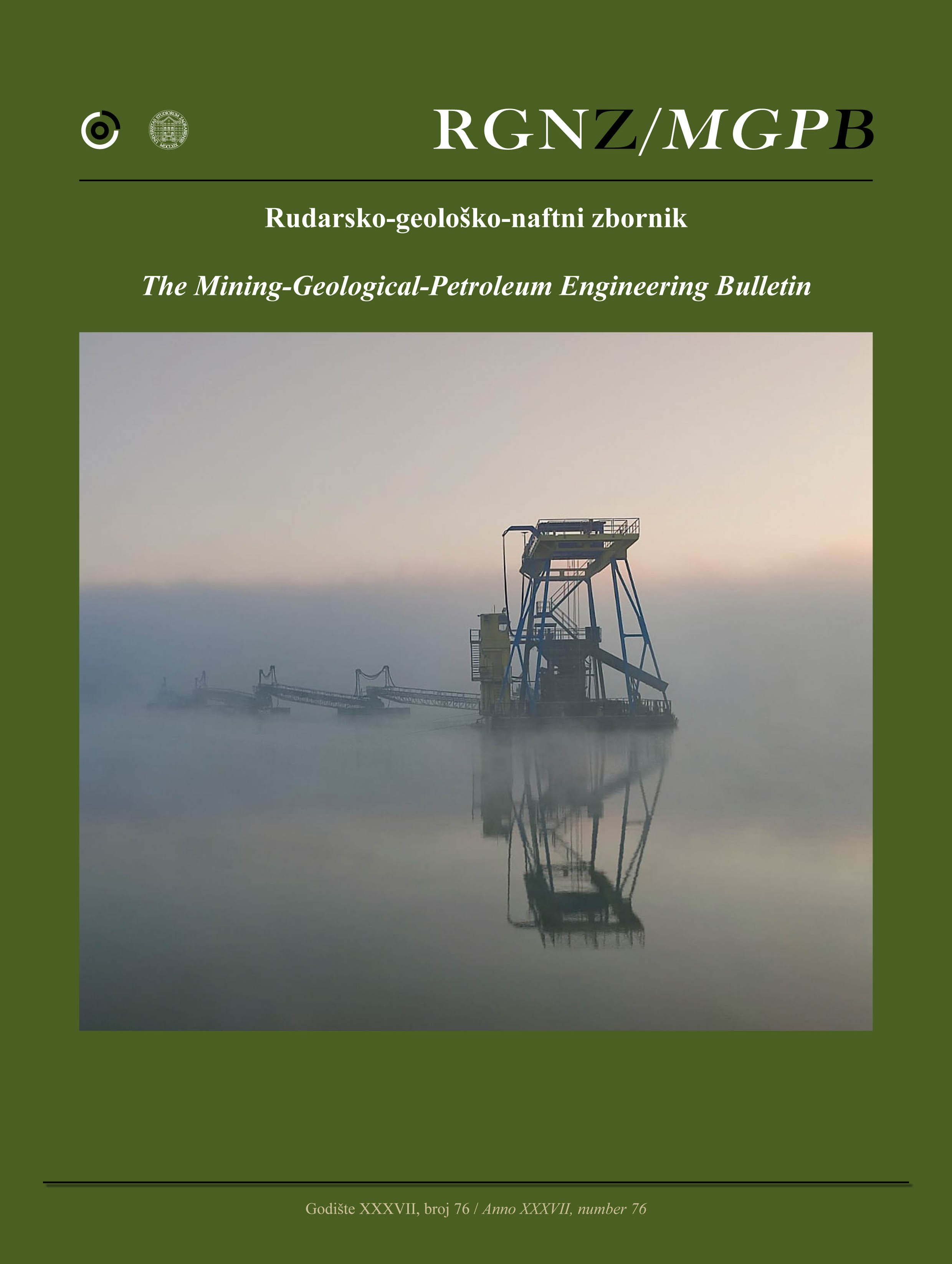An investigation on the potential recovery of copper from a low-grade copper resource containing high silica content
DOI:
https://doi.org/10.17794/rgn.2025.5.6Keywords:
copper oxide, tank leaching, extraction efficiency, optimization, dissolution kineticsAbstract
The present research aimed to experimentally peruse the tank leaching of copper from a low-grade ore containing 0.57% Cu, 24.69% Si, and 10.367% Fe. To this end, firstly, the behaviour of important variables influencing the dissolution process was examined using the one factor at a time (OFAT) method and response surface modelling (RSM), and then the leaching kinetics was scrutinized to obtain further recognition of the leaching operations. The findings derived from the OFAT technique demonstrated that the particle size of 0-2 mm was a better choice for the tank leaching relative to other fractions. The presence of clay compounds in the ore led to a high increase in acid consumption. The leaching rate improved with an increase in the solid percentage from 20 to 40% and then decreased with a further increase due to lack of proper mixing. Additionally, the pulp stirring speed had a little effect on the dissolution of copper, confirming that the mixing rate of pulp should be at a level that suspends the particles and prevents them from settling. Then, the RSM was utilized to model and optimize the process and determine the possible interaction between operating parameters. The results showed that copper leaching was significantly dependent on the interaction between the factors. The optimized amounts of parameters were found to be 90 kg/t acid concentration, 35% solid content, 150 rpm pulp mixing rate, 2.5 h leaching time, and 0-2 mm size range. The kinetic analysis showed that the diffusion model through the production layer with an activation energy of 14.15 kJ/mol was the rate-controlling stage of the reaction, and based on that, a new model describing the dissolution kinetics of copper was proposed.
Downloads
Published
Issue
Section
License
Copyright (c) 2025 Milad Abbassi, Asghar Azizi

This work is licensed under a Creative Commons Attribution 4.0 International License.
Creative Commons-BY
Authors who publish with this journal agree to the following terms:
In agreeing this form, you certify that:
- You read the ethical codex of the RGN zbornik available at journal web.
- You submitted work is your original work, and has not previously been published and does not include any form of plagiarism.
- You own copyright in the submitted work, and are therefore permitted to assign the licence to publish to RGN zbornik.
- Your submitted work contains no violation of any existing copyright or other third party right or any material of an obscene, libellous or otherwise unlawful nature.
- You have obtained permission for and acknowledged the source of any illustrations, diagrams or other material included in the work of which you are not the copyright owner.
- You have taken due care to ensure the accuracy of the work, and that, to the best of your knowledge, there are no false statements made within it.
- All co-authors of this submitted work are aware of, and in agreement with, the terms of this licence and that the submitted manuscript has been approved by these authors.
Publication licence
You retain copyright in your submitted work, according to journal license policy (CC-BY). By signing this form you agree that RGN zbornik may publish it under the publication licence. In summary the licence allows the following:
Anyone is free:
- To copy, distribute, display, and perform the work.
- To make derivative works.
Under the following conditions:
- The original author must always be given credit.
- The work may not be used for commercial purposes.
- If the work is altered, transformed, or built upon, the resulting work may only be distributed under a licence identical to this one.
Exceptions to the licence
In addition to publishing the work printed under the above licence, RGN zbornik will also enable the work to be visible online.
The journal editorial can change the licence rules anytime but it cannot retroactively restrict author(s) rights.


